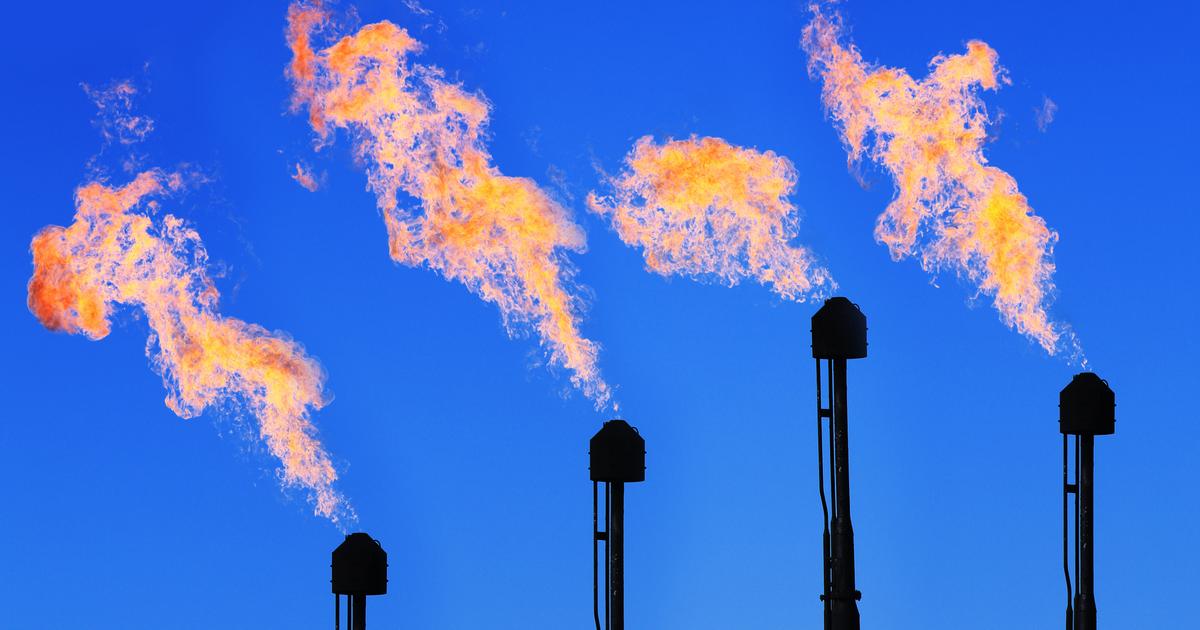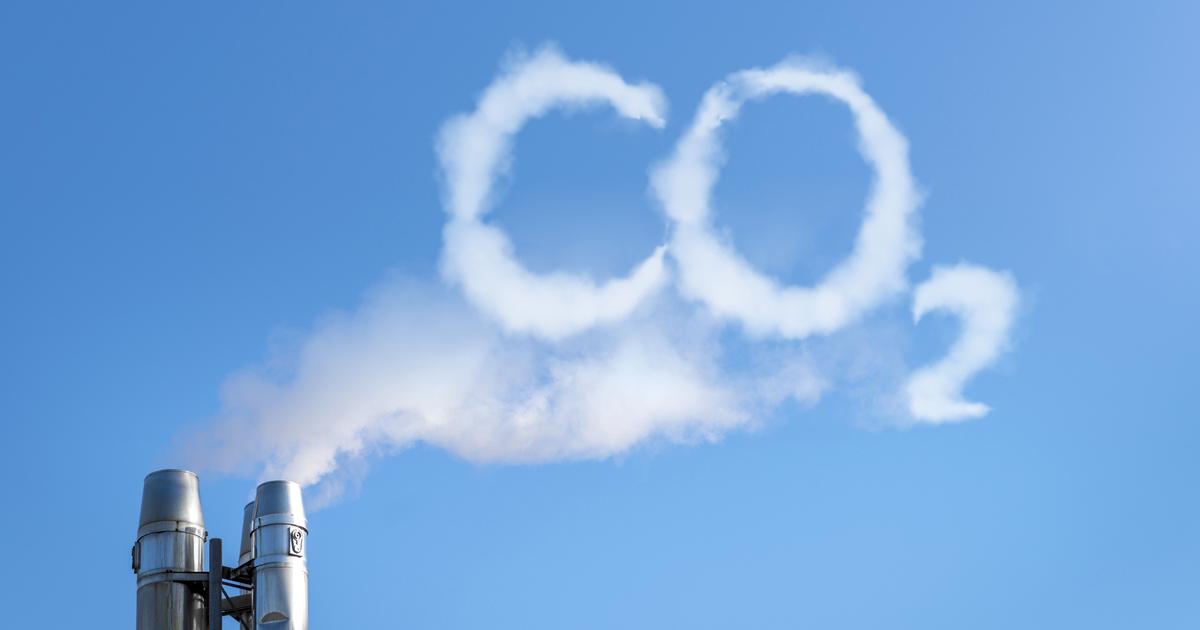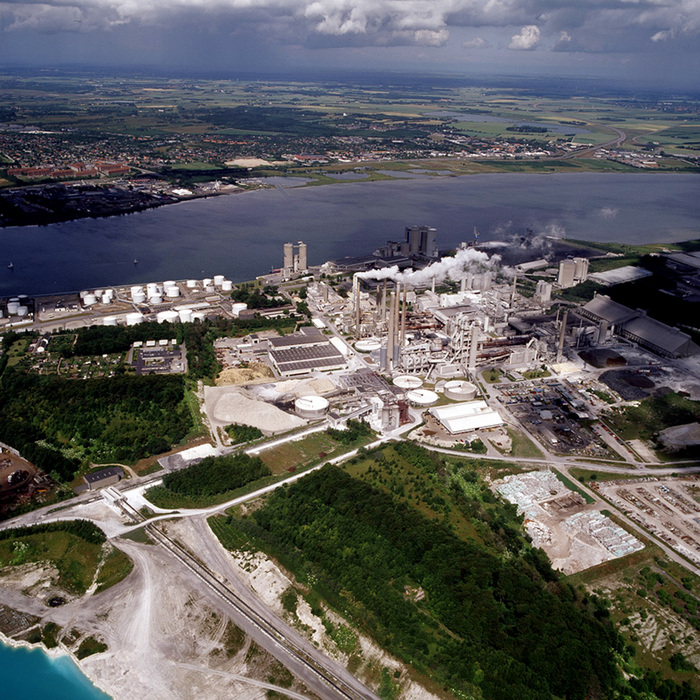Enlarge image
In order to achieve the 1.5 degree target, the global community must use more wind power
Photo: Bloomberg / Getty Images
The dangers of the climate crisis are specific.
So concrete that an authority that 15 years ago called for more oil to be extracted because oil was becoming scarce, is now presenting a plan that calls for the opposite: tough cuts and the consistent expansion of renewable energies.
No more money for coal, no more money for gas - this is how the 1.5 degree target should still be achieved.
This is what it says in the world's first comprehensive step-by-step plan for the global energy sector published by the International Energy Agency (IEA).
The goal: net CO2 neutrality by 2050. The IEA staggered the necessary measures - more than 400 in total - at five-year intervals.
The path shown is narrow, writes Fatih Birol, the executive director of the IEA, on Twitter.
But the goal at the end of this road is achievable - if governments act immediately.
But: Can the demands of the International Energy Agency also be implemented?
Can the path shown lead us to our goal in time?
Christoph Bertram is a physicist and political scientist.
He works at the Potsdam Institute for Climate Impact Research, where he heads the international climate policy team within the energy system group.
In an interview with SPIEGEL, he explains what the IEA's measures are for.
And why it has to start now.
2021
From now on, according to the IEA's plan,
no new coal-fired power plants are to
be approved.
Investments in projects to supply fossil fuels should also no longer be made.
That means: no new coal mines, no new natural gas production sites, no new oil wells.
The era of fossil energy use, not only could it come to an end, it should also come to an end, can be seen from the IEA's plan.
"It's about,
to get out of coal-fired power generation with immediate effect, «says Christoph Bertram.
"Electrification based on clean electricity is one of the pillars of decarbonization."
2025
Four more years, then
no
more
heating systems should
be sold for which
fossil fuels
have to be used.
Bertram believes that this is an important step: “Anyone who has a new gas heater installed today receives funding because heating with gas is less harmful to the climate than heating with crude oil.
However, gas heating is only half the step.
In the end, it's not worth it.
Wherever direct electrification is possible, you have to take the direct route. "
You can also heat with electricity.
So far it has only been significantly more expensive.
In the future, heat pumps could also become more important: thermal energy, i.e. heat from the earth or the air, is used in heating systems.
In every second new building, says Bertram, such pumps are now installed.
2030
The IEA is setting a number of brands for the year 2030: Among other things, all
newly built houses should be energy-efficient
: They must be well insulated, and be climate-neutral heating and cooling.
And no additional CO₂ may be emitted from the lighting either.
It is also envisaged that the
share of electric cars
in the number of cars sold worldwide will reach 60 percent.
An additional 1020 gigawatts of
wind and solar energy should be
available
per year
.
New plants have to be built for this.
And: The industrial nations must gradually push ahead with the phase-out of coal energy.
With this last point, Bertram sees the difficulty that not all countries will implement it equally: "In China there are many new coal-fired power plants," he says, "and a very energy-hungry industry.
There it could be difficult to completely replace the existing power supply with electricity from renewable energies within 20 years. "
more on the subject
Energy transition: the coal phase-out is already acceleratingBy Claus Hecking and Stefan Schultz
But there is also a need for adjustment in Germany: »Some of the German policy goals do not match the path proposed by the IEA - the coal phase-out by 2038, for example: Scientifically, it is scientifically clear that coal-fired power generation in industrialized countries for the 1.5 degree target at the latest Must end in 2030, ”says the researcher.
2035
If the IEA has its way, by 2035 at least 50 percent of the trucks sold will be electrically operated.
From then on,
new vehicles with internal combustion engines
will no longer be allowed to be sold.
Bertram does not see any particular difficulty in this: "The IEA's requirements for the electrification of cars and trucks are relatively compatible with the goals that some automobile manufacturers are already pursuing."
In addition, the step-by-step plan stipulates that
four gigatons of CO₂ are bound
each year.
What does that mean exactly?
The report leaves that open, says Bertram: “A technology that has not been tried and tested in the IEA report is the injection of CO₂ underground.
For me, that is the greatest uncertainty.
What is good: the portion that the IEA includes is not very high.
But you will not be able to do it completely without CCS, i.e. without carbon capture and storage. "
2040
From 2040 onwards, 50 percent of all
buildings should be climate-efficient
, regardless of whether they are old or new.
"Refurbishing existing buildings may be more difficult," says Bertram.
“We need clear guidelines for new buildings and conversions, now.
The CO₂ price is important for this, so that we know what to expect in the future. "
In addition, according to the IEA report, 50 percent of the
fuel used in aviation should be
low in emissions.
Remaining
coal-fired power plants
that are still in operation until 2040 must be retrofitted.
2045
From 2045 onwards, 435 megatons of
hydrogen should be
available
every year
.
What for?
"We don't need hydrogen for cars or heating, it works directly with electricity," explains Bertram.
Hydrogen-based fuels can be used in areas that cannot be electrified: for the production of cosmetics where synthetic oils are used as lubricants, for steel production or as liquid fuel in air traffic «.
2050
Then it's done.
To be more precise: Then it could be done.
If all the points listed by the IEA are met, around 70 percent of the world's energy will come from
wind power and solar systems
in 2050
.
The CO₂ emissions from the energy sector are approaching zero.
It is important, says Bertram, to create regulations for power distribution by then: “Sun and wind are dependent on the supply.
Therefore the power supply has to become more flexible.
Not everyone can charge their e-car at the same time, not all heat pumps can work at the same time. "
Can it all work?
In order to reach the stages indicated in the step-by-step plan, we have to use new technologies - we have to let aircraft fly with hydrogen and stow CO₂ under the seas.
"We need great leaps in innovation," says IEA boss Fatih Birol.
So do the experts reckon with technologies that may never be used?
Is the plan based on wishful thinking that bright minds will come up with something in time?
Bertram contradicts this.
He says: “We have to distinguish between the level of knowledge and the market level.
We are already familiar with many of the technologies that are included in the IEA report.
We know they work.
We just can't buy them on a large scale just yet.
In order for these technologies to emerge from their niche and also be available in terms of price, further innovations are necessary. "
And he calls for political incentives: “What we need now is the ability to plan.
And through CO₂ prices.
It must be clear to the industry: which technologies are still worthwhile and which are no longer?
To do this, it must be determined how the CO₂ price will develop after 2025.
The report looks for
In 2030, a price of around 120 euros per ton of CO₂ in industrialized countries. "
more on the subject
Environmental economist Edenhofer: "The focus must be on the CO₂ price" An interview by Michael Sauga and Gerald Traufetter
All of this means that not all obstacles on the path to an emission-free future can be removed now.
But: The IEA's step-by-step plan is the signal of a joint effort.
And contains important messages.
For Christoph Bertram the decisive one is: »There are still ways in which the 1.5 degree target can be achieved.
And these avenues can be beneficial: They could ensure access to energy for everyone.
They create jobs.
And they are not more expensive, on the contrary.
But in the beginning it takes investments.
Politicians must now set the framework for this, ideally using a predictable CO2 price. "









